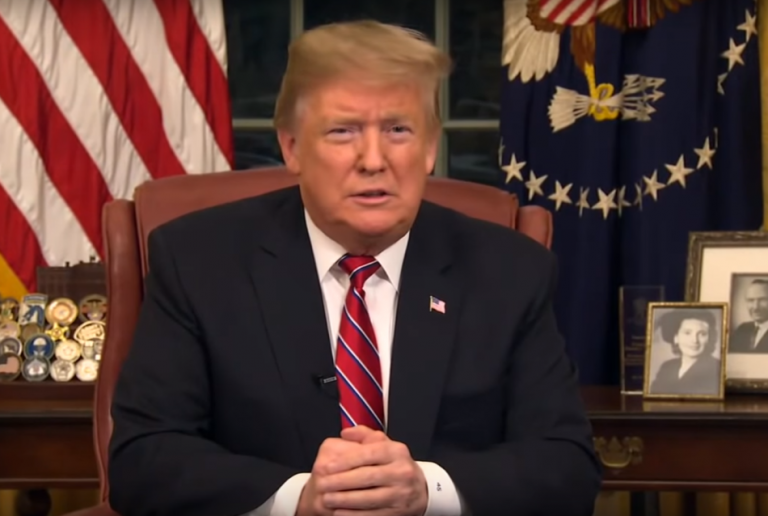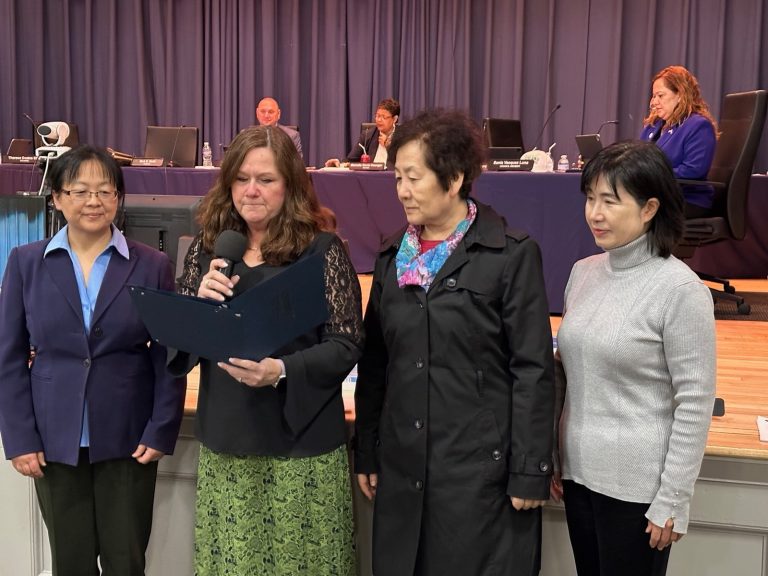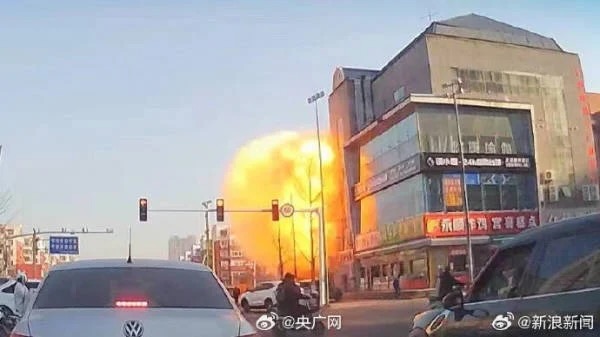Donald Trump is now in his third year as the 45th President of the United States, having taken office on Jan. 20, 2017 after his victory in the election over Democrat rival Hillary Clinton the previous November.
Under the banner of “America First” and “Make America Great Again,” Trump has attempted to implement his nationalist program, which is focused on reshaping trade relations, reworking America’s place in the post-Cold War global order, and boosting border security while clamping down on illegal immigration.
For weeks, the U.S. government has been in a partial shutdown, as Democrat and Republican legislators have thus far failed to produce a funding bill that Trump is willing to sign. The president maintains his insistence that any bill must include funding for the construction of a border wall along the U.S.-Mexico boundary; Democrats have called the proposal immoral and a waste of money.
Despite intense domestic opposition, and with his party losing the House of Representatives to the Democrats in the 2018 midterm elections, Trump has presided over a rising stock market and strong job growth. He has also taken a hardline stance on aggression by authoritarian regimes like China, North Korea, and Iran — policies that could potentially foster great change around the world.

Trump has attempted to implement his nationalist program, which is focused on reshaping trade relations, reworking America’s place in the post-Cold War global order, and boosting border security while clamping down on illegal immigration. (Image: Michael Vadon via flickr / CC BY-SA 2.0)
Facing communist China
The Trump administration has, in particular, shifted America’s policies regarding communist China, which has grown in the last few decades to become the second-biggest economy in the world. However, the Chinese Communist Party (CCP) is widely condemned for its human rights abuses, unfair trade practices, and efforts to expand its influence and even export its political model abroad.
Success
You are now signed up for our newsletter
Success
Check your email to complete sign up
Starting in mid-2018, the U.S. government imposed high tariffs on hundreds of billions of dollars’ worth of Chinese export goods. Beijing introduced its own tariffs in response, but the trade war is taking its toll on an already-struggling Chinese economy that suffers from high unemployment rates, low GDP growth, and looming “grey rhino” crises, such as a giant real estate bubble.
Adding to its trade offensive, the Trump administration has also taken China to task for its past abuses of business conventions — chiefly, the forced technology transfers and intellectual property theft that by Washington’s estimates have cost American companies hundreds of billions of dollars in lost profits every year.
Meanwhile, the U.S. government has paid more attention to China’s aggressive economic, military, and ideological ambitions, as reflected in the Chinese People’s Liberation Army’s continued militarization of the South China Sea, the CCP’s multi-trillion-dollar Belt and Road Initiative investments, and its United Front operations that are designed to confuse foreign governments and institutions about the nature of China’s recent rise.

Starting in mid-2018, the U.S. government imposed high tariffs on hundreds of billions of dollars’ worth of Chinese export goods. Beijing introduced its own tariffs in response, but the trade war is taking its toll on an already-struggling Chinese economy. (Image: Hermann Rohr / Vision Times)
In December, the Canadian authorities arrested CFO Meng Wanzhou of Huawei, China’s military-linked telecommunications giant, at the request of the U.S. Justice Department. Huawei has long aided the CCP by copying foreign products and outcompeting them in the global market. It is accused of violating U.S. sanctions against Iran.
As the confrontation between the U.S. and China develops into a zero-sum competition, Washington has begun to counter China on ideological terms, breaking with past policies that attempted to engage China from a primarily economic standpoint. A Congressional report from last August recommended that U.S. authorities take care to separate the concepts of the Chinese nation and its communist leadership. And in an Oct. 4 speech, U.S. Vice President Mike Pence suggested that democracy in Taiwan, which is officially governed as the Republic of China, presented a superior alternative for the entire Chinese people.
While maintaining outward opposition to U.S. demands for deeper economic reforms, President Xi Jinping, who is also the leader of the CCP, has expressed willingness to accommodate Trump’s requests in face-to-face talks.
Domestic discord, combined with external pressure from the United States and other countries, may be forcing a shift in the focus of the Chinese leadership. Xi, who has waged a long internal struggle with factions within the CCP, recently warned his Party colleagues of oncoming crises, including unforeseen “black swan” and “grey rhino” events.

In an Oct. 4 speech, U.S. Vice President Mike Pence suggested that democracy in Taiwan, which is officially governed as the Republic of China, presented a superior alternative for the entire Chinese people. (Image: YouTube / Screenshot)
Confronting aggressors
Trump came into office following the Obama administration’s “pivot to Asia” policy, formulated in response to rising aggression by the communist regimes of China and North Korea. The Republican president has amplified this policy by confronting North Korea on its ballistic missile and nuclear weapons testing and confronting China on its territorial claims in the South China Sea, which remains in international waters.
Throughout 2017, the Trump administration responded to North Korea’s provocations by increasing sanctions on the totalitarian state via the United Nations, making significant military deployments to the region, and maintaining a hardline diplomatic stance. With North Korean nuclear capabilities posing a threat to China, Beijing mostly cooperated with the international sanctions.
Even though North Korea retains its nuclear capabilities, pressure seems to have helped de-escalate the crisis on the Korean peninsula, at least for the moment. North Korea conducted its final missile test to date in November 2017. In March 2018, North Korean leader Kim Jong-un met with Chinese President Xi Jinping, Kim’s first state visit to a foreign country and the first of several high profile summits. Kim also met with his South Korean counterpart Moon Jae-in in three summits, which have been followed by an overall thaw in relations between the two Koreas.

The leaders of the U.S. and North Korea attended a joint meeting in Singapore in June 2018 to work out their issues, the most important being the denuclearization of North Korea. (Image: YouTube / Screenshot)
Despite verbal provocations by the North Korean government that led Trump to initially cancel a scheduled summit with Kim, the two leaders met in Singapore as planned in June 2018. Kim Jong-un has repeatedly expressed his country’s commitment to denuclearization; several North Korean testing sites have been closed. Meanwhile, North Korean propaganda has of late emphasized economic development as the country’s goal, a shift from its traditional priority of militarization.
In the Middle East, the Trump administration withdrew from the Iran nuclear deal in May 2018, calling it “horrible, one-sided, and disastrous.” In November, Washington reimposed sanctions on Iran and cooperated with Saudi Arabia to lower the global price of oil, exports of which have historically propped up the Iranian economy.
Follow us on Twitter or subscribe to our weekly email













